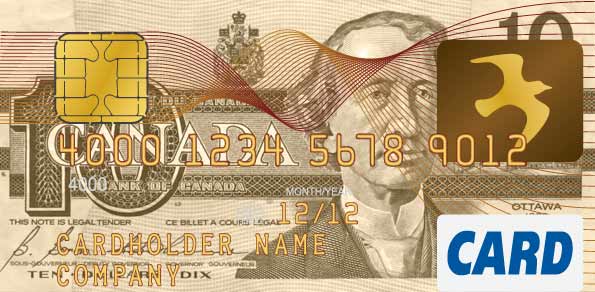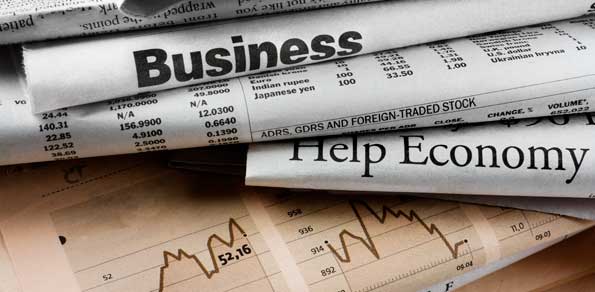Has Canada Gone Loonie, Are They Seriously Considering Replacing All Their Paper Currency With Plastic?
There are many viral marketing campaigns on the web, most crash and burn. Others, such as the one my colleagues at FXCC towers are about to unleash, have a real point of difference, I won’t spoil the surprise as we’ll give you a heads up when it goes live. But when I read yesterday that Canada was considering replacing all of its paper currency with plastic by 2013 I did wonder where the punchline was and when would it arrive, was this a new crisp viral marketing campaign? Yeah, that’s it, a play on the word “loonie”, nice one…
Surely the story couldn’t be true, whilst we’ve moved onwards and upwards over centuries to stop trading in goats and groats, replacing paper currency with plastic is surely a step far? Besides which, had Canada checked with America? I’d be checking my borders right now if I were a Canadian, countries have been invaded and occupied for indirectly threatening the status quo and reserve status of USA dollar and they have oil in Canada too, lots of it. It’s a bit difficult to reach, buried deep in those tar sands, but nevertheless they have huge reserves, some studies suggesting second only to Saudi..
The Bank of Canada actually announced that it planned to replace the nation’s paper currency with plastic bills in November 2011, they’ve since started by circulating $100 dollar bills, but now their intention is to replace all their paper money with recyclable polymer bills by 2013.
Apparently the new polymer notes are designed to make counterfeiting Canadian money more difficult, with translucent windows and raised ink. Each bill will have a see-through maple leaf on one side and a larger, transparent section on the other that will contain colour-shifting images. Whilst they can be folded, they won’t crease and will always retain their original shape.
Mark Carney, the Governor of the Bank of Canada;
[quote]The Bank is combining innovative technologies from around the world with Canadian ingenuity to create a unique series of bank notes that is more secure, economic and better for the environment.[/quote]
Polymer money has been adopted in many countries and the plastic bills have proven to be more economic, hygienic and effective in reducing the rate of counterfeiting. In Australia, the notes have reduced the amount of efforts and funds that are dedicated to combating counterfeiting operations, and made the validation of currency 82 percent more efficient than with paper notes, according to PolymerNotes.org.
In 2001, Canada began to see a dramatic increase in the amount of counterfeit bills and by 2004, officials found approximately 470 counterfeit notes per million bills in circulation, which Governor Carney states is a record high. By far the coolest (and arguably hardest feature to replicate) is the maple leaf window. With a light source coming in from the other side, if you raise the window close to your eye you see hidden numbers that correspond to the value of the bill. The new bills will last more than twice as long as their paper counterparts, but will cost about twice as much to produce.
The $100 bill was released in November 2011. In March 2012, the Bank will issue the polymer $50 bill. This note will focus on the influence of the northern frontier of Canada’s culture and will have a new portrait of Prime Minister William Lyon Mackenzie King, who served two terms in the mid-1900’s.
By the end of 2013, The Bank of Canada states that it will issue polymer $20, $10 and $5 bills. The $20 will be dedicated to Canadian involvement in world conflicts and feature Queen Elizabeth II. The Queen is currently the constitutional monarch of Canada, the United Kingdom, Australia, the Bahamas and 12 other sovereign states.
Sir John A. Macdonald, the first Canadian Prime Minister, will grace the $10, along with “The Canadian,” a transcontinental train that travels on what was once the longest railway in the world.
Canada’s contributions to the international space program will be recognised on the $5, and they will share the space with Sir Wilfrid Laurier. Laurier served as Prime Minister from 1896 to 1911 and was the first French-speaking Canadian leader.
Polymer researcher Stane Straus;
[quote]The tropical climate is a challenging environment for banknotes, especially because of high humidity and high temperatures. This causes paper notes to absorb moisture, thus becoming dirty and limp quickly. Polymer notes, on the other hand, do not absorb moisture. You could say that polymer notes beat paper notes in terms of cleanliness and durability in all climates, but this particular advantage of polymer notes stands out even more in tropical climates.[/quote]
Stane Straus also sings the praises of polymer, from an environmental point of view, compared with traditional paper banknotes. Many of these are actually made of cotton, US paper bills are 75% cotton, which take large amounts of pesticides and water to produce.
The key points
[unordered_list style=”star”]
- Polymer notes last more than twice as long as paper notes, and cost less to produce over their lifetime, but they also have some disadvantages
- They used to be harder to counterfeit than paper notes, though paper notes have now caught up
- Disadvantages include being unfold-able and more slippery
- Central bankers are conservative and risk averse – and are waiting to see whether their counterparts in other countries embrace plastic first
[/unordered_list]
Today, 23 countries use polymer banknotes, but only six have converted all denominations into plastic.
Stane Straus;
[quote]Central banks are very conservative institutions. People making the decision to convert to polymer – partially or fully – are taking a personal risk. Many central banks are simply waiting until others convert and then they will follow.[/quote]
Perhaps the so called conservatism (with a small ‘c’) of the largest central banks actually masks another wider doubt were the dollar, euro, sterling and yen is concerned. The overall psychological and numerical debasement of a currency at the wrong time could have huge impact on it’s perception as a store of value. It could be sometime before we see the FED, the BoE, BOJ and ECB follow Canada’s example, especially when all four countries’ currencies appear to be locked into a death match spiral free-fall.






Comments are closed.